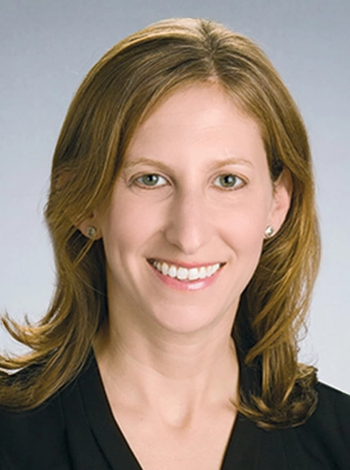
- May 2022
- Volume 39
- Issue 4
The business of being a pediatrician
Primary care providers enjoy caring for their patients, but a practice is also a business and must be profitable. Here’s what you should know.
Although many primary care providers (PCPs) enjoy the freedom of managing their own offices, the number of physician-owned practices is slowly declining. Results of a 2020 American Medical Association (AMA) survey of 3500 PCPs showed that 49.1% of those surveyed worked in physician-owned practices, down from 54% in a 2018 AMA survey.1
Respondents gave the following chief reasons for abandoning private practice:
- Many feared that, as medical practice grows more complicated, health care reform will drive more physicians out of practice.
- Most doctors saw joining a hospital or health system organization as a way to safeguard salaries, at least for the near future.
- More than half of doctors cited electronic health record (EHR) requirements as a main reason for leaving private practice.
Pediatricians become employed by institutions because they believe that by joining a large medical organization, they will be assured of consistent pay and patient visits. However, as employees, they also give up their autonomy. This means using the EHR chosen by the institution and following policies established by managers. Pediatricians may be able to express their opinions and influence decisions, but , unlike with private practice, change comes slowly, and policies are often reactive rather than proactive.
The following suggestions will help independent pediatric practices thrive in an era of uncertainty, pandemics, and health care reform. The good news: The need for PCPs is expected to increase over the next few years, and those who provide quality care will be in the best position to negotiate lucrative contracts with insurance companies.
Focus on the essentials
First and foremost, a practice needs a good office manager to ensure that revenues are maximized and patients and staff are happy, as well as keep a sharp eye on changes in the community that will affect a practice. The manager is the go-to person for patient or staff issues and works with the managing physician to oversee the well-being of the practice. Their skill set includes coding, familiarity with EHRs, experience in negotiating insurance contracts and accounts payable, and management of human resources. The office manager will lead and conduct regular meetings with all staff and business meetings with providers.
Cash flow is the lifeblood of any practice. If insurance companies delay payments or the practice has a slow month or 2, a decline in cash flow may threaten viability. Using an effective billing service or employing experienced coders and billers can optimize cash flow. Electronic claims should be submitted within 7 days of service for a busy practice and posted within 2 or 3 days of receipt; patient bills should be generated within a week of posting. Paper claims can significantly prolong the collection process and should be avoided
Co-payments and monies owed the practice should be collected at the time of service. Offering discounts for cash or check payments might be appreciated by patients while avoiding credit card fees. Patient eligibility should always be verified via the insurance company’s website—this usually takes less than 2 minutes.
Many practices have parents or patients sign an agreement enabling the practice to charge a credit card for their portion of the bill once insurance company has processed the submitted claim.
Billing services can be outsourced, but the vendor will collect a percentage of payments or a charge per claim processed (or a hybrid), even if the bill is not paid. Many pediatricians prefer to keep billing and collections in-house so they can monitor cash flow and react to problems sooner rather than later.
Finally, a practice should consider rewarding the office manager with productivity bonuses for increasing practice revenue or averting disasters. Additionally, coders and billers should be paid well and perhaps given incentives for hitting collection benchmarks.
Do your due diligence on denied claims
Pediatricians should never be reluctant to challenge denied claims for charges they feel are appropriate. Not infrequently, insurance companies fail to make payments for new services that a practice offers, such as photo screeners for visual screening. Attaching American Academy of Pediatrics (AAP) policy statements that support appeal letters can be helpful. The LISTSERV run by the AAP’s Section on Administration and Practice Management is a great resource for researching related issues.
Some pediatricians are not aware that they can charge for both a well visit and a sick visit when coders use modifiers correctly and provide notes to document services. This can be done when, during a well visit, a patient is discovered to have an ear infection, a sore throat, or pneumonia or a new significant problem (eg, blood in stool, palpitations) is discussed requiring further evaluation.
A substantial cash reserve can keep a practice running for months should collections or productivity decline. If having a large amount of cash on hand is not possible, an established line of credit can be used in times of need and paid off in times of plenty.
Improve efficiency
Pediatricians need to scrutinize work-flow to optimize daily patient throughput. This means simplifying the check-in process by shortening patient intake or registration questionnaires, mailing new-patient registration forms or using patient portals, and using secure email or online services to remind patients of appointments. Technological devices, especially photoscreeners and otoacoustic emissions automated hearing screeners, can improve office-based care and screening, as can as in-office diagnostic tools such as rapid strep and influenza tests and testing for lead, respiratory syncytial virus, and COVID-19.
Workflow practices should maximize quality time with patients so pediatricians can reinforce recommendations. Staff should take vital signs in examination rooms, as well as document the chief complaint and update the medication and problem list, so providers can focus on patient care rather than deal with electronic housekeeping. To increase office efficiency, all examination rooms should be equipped with computers running the EHR and printers so that health forms can be handed directly to the patient’s caregiver before exiting.
It is important for pediatricians to offer telehealth services to facilitate patient access. Consider using telehealth even for well visits.
Optimize coding, billing, and collection
Learning coding for pediatric services is crucial. (To read about the most recent coding updates for pediatric health care providers, visit
- At least 1 chronic illness with mild exacerbation, progression, or adverse effects of treatment (eg, asthma exacerbation, attention-deficit/ hyperactivity disorder, not responding to medication)
- 2 or more stable chronic illnesses (eg, asthma, enuresis)
- An undiagnosed new problem with uncertain prognosis (eg, blood in stool)
- Acute illness with systemic symptoms (eg, pyelonephritis, pneumonitis, colitis)
- Acute complicated injury (eg, head injury with brief loss of consciousness)
- A condition that requires prescription drug management (eg, urinary tract infection, streptococcal pharyngitis)
Rein in overhead
Practices can take many measures to reduce expenses. EHRs are extremely expensive, so practices should not hesitate to compare systems and make cost-effective changes. Patient portals can dramatically reduce overhead by saving postage and time by automating many of the tedious processes that can occupy much of a medical staff’s time. Most portals facilitate bill payment via the portal itself.
The costs of high-price items (eg, photoscreeners, copier) can be reduced through leasing agreements, which allow keeping up with the latest and greatest technologies—devices often become obsolete after a few years. Scribes or voice-recognition dictation software can save time in documenting office notes.
A strict no-show policy will help reduce the number of missed appointments. Another consideration: charging patients after the first missed appointment and discharging those who are frequent abusers.
Additionally, employing the right staff to meet office needs keeps costs down. For example, nurses should not be hired to perform duties that medical assistants can easily do. With the appropriate number of staff, everyone is busy but not stressed and overworked. Group purchasing services such as Physicians’ Alliance of America and Physicians’ Buying Group offer members discounted rates on frequently bought items such as table paper, syringes, and needles.
Monitor key indicators
Keeping tabs on key performance indicators helps ensure a practice is functioning optimally. The Physicians Computer Company (PCC) provided current data for this article (see Table) regarding pediatric practice benchmarks, derived from over 1000 pediatric providers using the PCC EHR and practice management/ billing suite. The table shows average performance benchmarks as well as those for the top 10% performers using the PCC system.
Practitioners should take a realistic look at their financial and practice metrics and ask themselves if they are seeing as many patients as they did 2 years ago. Is the practice growing or shrinking in terms of enrolled patients? Is overhead rising? Practices that are not thriving might consider merging with others in the area. Larger practices offer advantages in controlling costs, negotiating contracts with insurance companies, and centralizing billing and computer operations.
Although we cannot be certain what a medical practice will look like next year or in 10 years, pediatricians can take solace in the fact that they take care of a very special group of patients.
References
- Kane CK. Policy research perspectives: recent changes in physician practice arrangements: private practice dropped to less than 50 percent of physicians in 2020. American Medical Association. 2021.Accessed March 7, 2022.
https://www.ama-assn.org/system/files/2021-05/2020-prp-physician-practice-arrangements.pdf - 2021 Survey of America’s physicians: COVID-19 impact edition: a year later. The Physicians Foundation. June 2021. Accessed March 8, 2022.
https://physiciansfoundation.org/wp-content/uploads/2021/08/2021-Survey-Of-Americas-Physicians-Covid-19-Impact-Edition-A-Year-Later.pdf
Articles in this issue
over 3 years ago
Assessment and treatment of eating disorders in adolescentsover 3 years ago
Does diet really play a role in acne?over 3 years ago
Telehealth for pediatric well visits: Sometimes the best optionover 3 years ago
Diagnostic testing for SVT usually can be skippedNewsletter
Access practical, evidence-based guidance to support better care for our youngest patients. Join our email list for the latest clinical updates.








